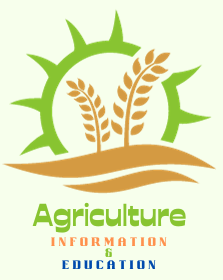Determining Nutrient Needs for Optimal Crop Yield: A Comprehensive Guide
Introduction
The quest for maximizing crop yield involves a meticulous understanding of the nutrient needs of crop plants. Cultivating healthy crops with high potential yields requires a strategic approach to nutrient management. This involves considering factors such as soil health, crop-specific requirements, growth stages, environmental influences, and the judicious application of fertilizers. In this comprehensive guide, we will explore the key steps and considerations involved in determining the nutrient needs for achieving the yield potentiality of crop plants.
Soil Testing
The foundation of effective nutrient management lies in understanding the current state of the soil. Soil testing is a crucial step that involves analyzing soil samples to assess nutrient levels, pH, and other essential soil properties. This process provides valuable insights into the soil’s health and fertility. By identifying nutrient deficiencies or imbalances, farmers can make informed decisions about fertilization strategies.
Crop Nutrient Requirements
Different crops have distinct nutrient requirements at various stages of growth. Understanding these specific needs is paramount for tailoring nutrient management practices to the crop in question. Agricultural extension services, research institutions, and local experts often provide guidelines and recommendations for crop-specific nutrient requirements. These guidelines consider factors such as the crop’s nutrient uptake patterns and response to varying environmental conditions.
Nutrient Mobility and Uptake
The mobility of nutrients in the soil and their uptake by plants are critical considerations in nutrient management. Some nutrients are highly mobile and can move easily through the soil, while others may have limited mobility and depend on proximity to plant roots for uptake. Recognizing these dynamics helps in selecting the appropriate fertilizers and optimizing their application methods.
Growth Stages
Crop nutrient requirements vary significantly at different growth stages. Plants have specific needs during germination, vegetative growth, flowering, and fruiting. Nutrient deficiencies or excesses at any of these stages can have profound effects on the overall yield potential. Therefore, tailoring fertilizer applications to meet the changing demands of the crop throughout its life cycle is essential for optimal results.
Environmental Factors
Environmental factors play a crucial role in nutrient availability and uptake. Temperature, moisture levels, and soil microbial activity can influence the availability of nutrients in the soil. Additionally, factors like extreme weather events or changes in precipitation patterns can impact nutrient management strategies. Adapting nutrient applications to account for these environmental variables is key to ensuring that crops receive the nutrients they need under varying conditions.
Fertilizer Application
Once soil tests have been conducted, and crop nutrient requirements have been identified, the next step is to determine the type and amount of fertilizers to apply. Fertilizers may contain a combination of essential nutrients such as nitrogen, phosphorus, potassium, sulfur, and micronutrients. Calculating the optimal fertilizer rates involves a balance between supplying sufficient nutrients for plant growth and avoiding over-application, which can lead to environmental issues.
Consideration should also be given to the form of fertilizers used. Different crops and soils may respond better to certain fertilizer formulations, such as granular, liquid, or controlled-release fertilizers. Organic amendments, cover crops, and crop rotation are alternative strategies that can enhance nutrient availability and improve soil health in a sustainable manner.
Precision Agriculture Technologies
Advancements in technology have given rise to precision agriculture tools that can revolutionize nutrient management. Satellite imagery, sensors, and data analytics can be employed to monitor nutrient levels in the field with unprecedented accuracy. This data-driven approach enables farmers to apply fertilizers more efficiently, targeting specific areas of the field that require additional nutrients. Precision agriculture technologies contribute to resource optimization and environmental sustainability.
Monitoring and Adjustments
Effective nutrient management is an ongoing process that requires regular monitoring throughout the growing season. Leaf tissue analysis is a valuable tool for assessing nutrient levels in plants. By sampling and analyzing leaves, farmers can identify nutrient deficiencies or excesses and make timely adjustments to fertilizer applications. Monitoring also involves observing crop responses to nutrient inputs and adjusting management practices accordingly.
Flexibility is key in nutrient management, as conditions can change over the course of the growing season. Farmers should be prepared to make adjustments based on observed crop performance, changes in weather patterns, or unexpected factors that may affect nutrient availability.
Record Keeping
Maintaining detailed records of nutrient management practices is essential for informed decision-making in subsequent growing seasons. Accurate records of fertilizer applications, crop yields, and any observed changes in plant health provide a historical perspective that can guide future nutrient management decisions. Keeping records also facilitates compliance with environmental regulations and certification programs, demonstrating a commitment to sustainable and responsible farming practices.
Conclusion
In conclusion, determining the nutrient needs for the yield potentiality of crop plants is a multifaceted process that requires a holistic understanding of soil-plant interactions, crop biology, and environmental influences. By following these comprehensive steps and considerations, farmers can optimize nutrient management practices to promote healthy crop growth and achieve maximum yields. In an era of advancing agricultural technologies, integrating precision agriculture tools with traditional agronomic practices can further enhance the efficiency and sustainability of nutrient management in modern farming.


Apki research bahut hai sir ji
Very good
Valuable information